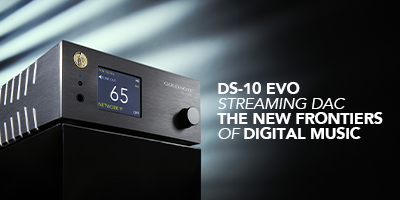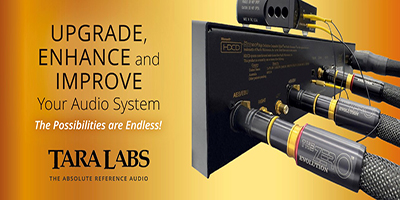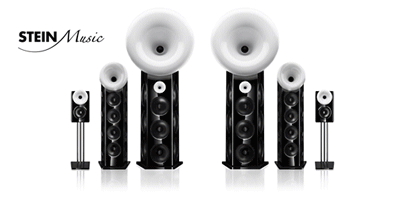In the diagram above you can see the valve complement for the M3, M5, M6, and M8 family of phono preamplifiers. If you look at the M6 & M8 columns, you can see that the valve complement for the M6 & M8 RIAA versions differ only in V2, where the M6 utilizes a 7044 in V2, and the M8 a 6463 in V2.
In perusing the descriptions of the M6 and M8 RIAAs - I put the differences in bold font - we read the following:
"At the heart of the M6 RIAA is an exceptionally fine moving magnet phono stage which uses three 5670 valves. This is followed by a 7044 equipped line stage, and both sections are powered by their own dedicated 6X5 valve rectified power supply based on the M10 Galahad PSU. These power supplies also incorporate an ECL82 for voltage regulation and an 5651 as a voltage stabiliser. Audio Note (UK) Copper wiring, Audio Note (UK) one Watt Tantalum resistors, our own custom electrolytic capacitors and Audio Note (UK) copper foil signal capacitors are used throughout the circuit, along with in-house designed and manufactured, custom Audio Note (UK) output transformers which feature UHiB double c-cores, copper windings for the primaries and silver windings for the secondaries. The M6 RIAA also has a correctly designed and implemented balanced output circuit."
"At the heart of the M8 RIAA is an exceptionally fine moving magnet phono stage which uses three 5670 valves. This is followed by a 6463 equipped line stage, and both sections are powered by their own dedicated 6X5 valve rectified power supply based on the M10 Galahad PSU. These power supplies also incorporate an ECL82 for voltage regulation and a 5651 as a voltage stabiliser. Audio Note (UK) Silver wiring, Audio Note (UK) two Watt Tantalum resistors, Custom Audio Note (UK) electrolytic capacitors and Audio Note (UK) silver foil signal capacitors are used throughout the circuit, along with in-house designed and manufactured, custom Audio Note (UK) output transformers which feature HiB 50% Nickel double c-cores, silver windings for both the primaries and for the secondaries. The M8 RIAA also has a correctly designed and implemented balanced output circuit."
So the circuit upgrades when going from the M6 to M8 RIAA are going from a V2 of 7044 to 6463, from copper to silver wiring, from one Watt tantalum resistors to 2 watt tantalum resistors, from copper foil signal capacitors to silver foil signal capacitors, and from output transformers with UHiB double c-cores / copper wound primaries / silver wound secondaries to output transformers with HiB 50% Nickel double c-cores and silver wound primaries & secondaries.
From the outside the M6 RIAA and M8 RIAA look identical exception for their front panel names (above).
Now let's take a look inside (below).
You can see that the layout of the circuit components are the same between the M6 & M8 (above). Some of the circuit boards are a little different in color.
Below is the power supply side of the M6 RIAA's chassis.
Below is the power supply side of the M8's chassis.
Note the copper wiring on the M6 power transformers (below).
Note the silver wiring on the M8 power transformers (below).
In the power supply side of the chassis for the M6 (below), note the 10,000uF Kaisei electrolytic capacitor on the left, and the three smaller Kaisei electrolytic caps on the circuit board. These capacitors are custom made for Audio Note (UK) by the "engineering team at Rubycon (of Black Gate fame). They are based on the same materials with the only difference being the paper used is not impregnated with graphite particles. Otherwise, the Kaisei capacitors use the same special electrolyte."
Note also the 1 watt tantalum resistors on the circuit board. "Tantalum; the Tone King ... We have gone to great lengths to ensure a continuing supply of these wonderful, tone-full components, even to extent of convincing the manufacturer to continue production, purely to supply our requirements."
In the power supply side of the M8's chassis (below), note the four 2200uF Kaisei electrolytic capacitors on the left, and the three smaller Kaisei electrolytic capacitors on the circuit board.
Notice also the "plump" 2 watt tantalum "Tone-King" resistors on the circuit board, and the silver wiring to the circuit board.
The phono and line stage of the M6 RIAA are powered by their own dedicated 6X5 valve rectified power supplies based on the M10 Galahad power supply designed by Andy Grove (below). There is more information on the Galahad power supply HERE.
The M6 power supplies use 2 x NOS Phillips 6X5G rectifiers in V3 and V9, 2 x NOS RCA ECL82/6BM8 valves in V4 and V10 for voltage regulation, and 2 x NOS Raytheon JAN 5651WA valves in V5 and V11 as voltage stabilizers.
The M6's wiring is copper, the resistors are one Watt tantalum, and there are custom Kaisei electrolytic capacitors (think Black Gate).
As with the M6, the phono and line stage of the M8 RIAA are powered by their own dedicated 6X5 valve rectified power supplies based on the M10 Galahad power supply designed by Andy Grove (below).
The M8 power supplies use 2 x NOS Phillips 6X5G rectifiers in V3 and V9, 2 x NOS Siemens ECL82/6BM8 valves (made in Germany) in V4 and V10 for voltage regulation, and 2 x NOS Raytheon JAN 5651WA valves in V5 and V11 as voltage stabilizers.
The M8's wiring is silver, the resistors are two Watt tantalum, and there are custom Kaisei electrolytic capacitors (e.g. think Black Gate).
Now lets take a look at the moving magnet phono stage side of the M6 & M8 RIAA.
In the photo below you can see the M6's moving magnet phono stage on the left, the line stage in the middle, and the output transformers on the right.
Both the phono and line stage are powered by their own dedicated 6X5 valve rectified power supplies based on the M10 Galahad PSU, as described earlier.

M6 phono stage side of the chassis. Phono stage (left), line stage (middle), and output transformers (right).
In the M6's phono stage (below), you can see 3 x GE JAN 5670W/2C51W valves in V6-8, Audio Note (UK) copper foil signal capacitors, tantalum one Watt resistors, and a Kaisei electrolytic capacitor on the phono stage circuit board.
In the M6's line stage (below), you can see the NOS GE 7044 for V2, the Kaisei electrolytic capacitors, and one Watt tantalum resistors.
Below you can see the M6's in-house designed and manufactured, custom Audio Note (UK) output transformers which feature UHiB double c-cores, copper windings for the primaries, and silver windings for the secondaries.
In the photo below you can see the M8's moving magnet phono stage on the left, the line stage in the middle, and the output transformers on the right.
Both the phono and line stage are powered by their own dedicated 6X5 valve rectified power supplies based on the M10 Galahad PSU, as described earlier.
In the M8's phono stage (below), you can see 3 x GE JAN 5670W/2C51W valves in V6-8, Audio Note (UK) silver foil signal capacitors, tantalum two Watt resistors, and Kaisei electrolytic capacitors on the phono stage circuit board.
In the M8's line stage (below), you can see the NOS Telefunken 6463 for V2, the Black Gate electrolytic capacitors (red), and the two Watt tantalum resistors.
In the photo below are the M8's in-house designed and manufactured, custom Audio Note (UK) output transformers with HiB 50% Nickel double c-cores, and silver windings for both the primaries and for the secondaries.
While the M6 and M8 RIAA phono preamplifiers look the same on the outside, and share the same circuit topology, zero negative feedback, single-ended circuit topology, and valve rectification, there are some notable circuit component performance upgrades when going from the Level Four M6 RIAA to the Level Five M8 RIAA.
To summarize the differences:
Level Four M6 RIAA
- Vacuum tubes - V2 is a NOS GE 7044, and 2 x NOS RCA ECL82/6BM8 valves in V4 and V10 for voltage regulation.
- Audio Note (UK) copper wiring.
- Audio Note (UK) one Watt tantalum resistors.
- Audio Note (UK) copper foil signal capacitors.
- Audio Note (UK) output transformers which feature UHiB double c-cores, copper windings for the primaries and silver windings for the secondaries.
Level Five M8 RIAA
- Vacuum tubes - V2 is a NOS Telefunken 6463, and 2 x NOS Siemens ECL82/6BM8 valves (made in Germany) in V4 and V10 for voltage regulation.
- Audio Note (UK) silver wiring.
- Audio Note (UK) two Watt tantalum resistors.
- Audio Note (UK) silver foil signal capacitors.
- Audio Note (UK) output transformers which feature HiB 50% Nickel double c-cores, silver windings for both the primaries and for the secondaries.
Well, I hope the photographic "walk-through" of the M6 and M8 RIAA phono preamplifiers helps you understand the changes that were made in going from the Level Four M6 RIAA to the Level Five M8 RIAA.
Next I'll be writing an update about what I'm hearing from the Level Five M8 RIAA now that it is about halfway through its bedding-in period of 100 hours. That's a lot of albums, 68 so far, so I've got another 66 albums to go to get to the full 100 hours in.
I'll cover the differences between the Level Four AN-S4L step-up transformer and the Level Five AN-S8L step-up transformer in a future article.
Previous articles in this series:
Today's Fresh Catch: The Audio Note (UK) M8 RIAA phono preamplifier and AN-S8L step-up transformer! HERE.
Listening: The Audio Note (UK) M8 RIAA phono pre & AN-S8L SUT! HERE.
Ok, that's all for now.
As always, thanks for stopping by, and may the tone be with you!














































